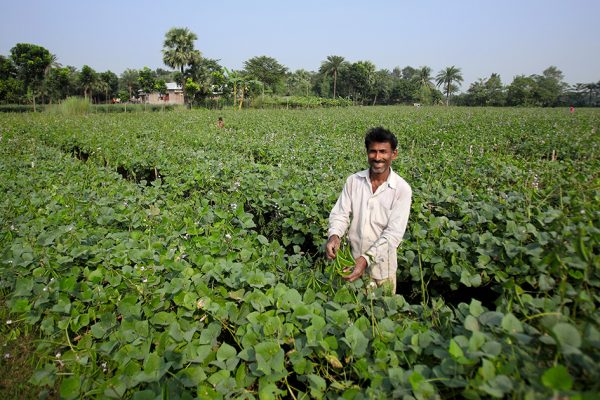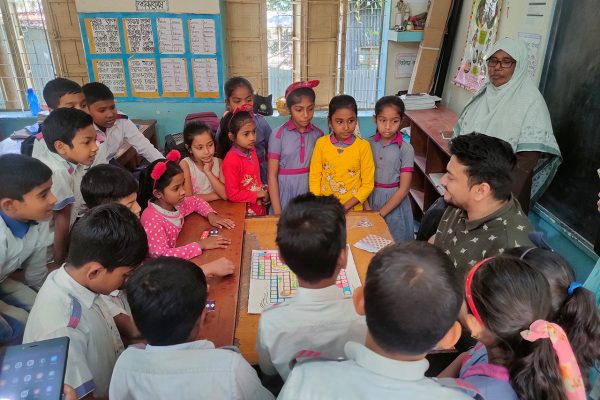Banking the poor
Reading Time: 4 minutes
Stuart Rutherford is an expert in financial services for the poor, and the author of ‘The Poor and Their Money’. He founded SafeSave in 1996, to provide basic banking services in the slums of Bangladesh’s capital, Dhaka. Nearly two decades on SafeSave serves 19,000 clients, helping them afford everyday expenses and budget for bigger life events.
Originally posted on Philanthropy Age.
Stuart Rutherford is an expert in financial services for the poor, and the author of ‘The Poor and Their Money’. He founded SafeSave in 1996, to provide basic banking services in the slums of Bangladesh’s capital, Dhaka. Nearly two decades on SafeSave serves 19,000 clients, helping them afford everyday expenses and budget for bigger life events. In January 2014, BRAC took ownership of SafeSave, which is currently operating in eight low-income areas of Dhaka.
In this interview, Stuart Rutherford tells us why financial services matter for the world’s poorest – and for the push to eradicate poverty.
Why is financial inclusion so critical for the poor?
The financial lives of poor people are no different from those of the rich. You need the means to feed your family every day and the ability to budget for big expenditures, such as weddings, children’s education and building a home. But if you’re poor, your income is small and unreliable. The main barrier is to do with economic lives. If you’re poor, you don’t have a regular income and the banks aren’t interested in doing business with you. None of your financial life is automated; you live in a world of do-it-yourself finance. Each week, you must remember to put money aside, or repay debt.
To what extent did microfinance help the unbanked?
For a long time the Grameen Bank (set up by Muhammad Yunus in Bangladesh) and its mode of microcredit seemed to be working extremely well. But there was a founding myth of microcredit: that every poor person is inherently capable of taking and repaying loans, and of putting all the loan into a business, which would then grow and lift them out of poverty. If you believe that myth, then the best thing to do is to get as many loans out to poor people as possible.
In some cases, that led to too much debt. In southern India in 2010, vast numbers of microfinance organisations sprung up, tapped the financial markets and gave multiple loans to poor villagers. Suddenly there were 10 microfinance firms lining up on villagers’ doorsteps offering USD 50 or USD 100 loans. A lot of people got into over-indebtedness.
But again, the poor are no different from the rich. Only a minority of people in the west have the desire and willingness to start and run a business. Most people want a job, with a salary and a regular income.
We need to place a much bigger emphasis on understanding the economic and financial lives of poor people. The World Bank’s Consultative Group to Assist the Poor (CGAP), for example, has shifted its stance and is much more interested in understanding real customer needs – for savings, insurance, pensions, the need to be careful when you lend. The criticisms of microfinance were just. But things have got better since.
Where do savings fit in to microfinance?
There is a general prejudice that poor people can’t save money – that they need fresh money coming in, not money going out. But if you look at their behaviour, you find most poor households have some informal mechanism to save. The most common way is at home, hiding money under the mattress or sewing it into clothes. Or, you give the money to someone you trust – a money-guard. The third way is through savings clubs, where neighbours pool their savings to produce the sums of money they need.
The problem is that not only does this approach forgo interest; it loses money. In southern India and western Africa, one of the most common ways to save is with a deposit collector, a person from the community who goes around each day and collects small amount of savings. When a good amount is built up, she gives it back to them, less a bit to pay her. You lose on the deal, but people regard the few dollars they pay as a good price for the security.
What impact can savings have on poverty?
SafeSave lends and takes savings. On the lending side, we charge borrowers 2.25 per cent per month on their loans, and on the savings side we pay between 5 and 8 per cent a year. We provide a daily service to collect deposits from each household. Today, in Dhaka, SafeSave has eight branches in slum areas reaching 19,000 clients. On average people put away BDT 600 per month (USD 7.50).
Savings can make a lasting difference. In Bangladesh a couple of weeks ago, I met a young woman who had previously had a miscarriage, and a child die just after birth. She was determined her next child would have better chance so she opened one of our long-term savings accounts, expressly to set money aside for childbirth. I learned a few weeks ago she took the money out of the account and spent it on a good hospital, getting good treatment, and her child is doing well.
SafeSave became part of the Bangladesh-based NGO BRAC two years ago. It currently has USD 1.5 million in savings on its balance sheet and USD 1.1 million in outstanding loans. In other words, poor people are using SafeSave much more to save than to borrow.
How can we increase access to financial services for poor people?
Commercial banks are profit-making organisations with big overheads. It isn’t that big banks should get involved in financial services for the poor, but rather there are other things formal banks can do, such as lend money to nonprofit microfinance organisations. And as technology improves, there are opportunities such as within mobile money, where big banks can get involved on a profit-making basis.
While we’ve made progress on access to credit and savings, poor people still lack insurance and pensions – these two are where we still have an awful lot of work to do. I think the impact outsiders can have will come through more direct interventions, the kind of work the Bill & Melinda Gates Foundation does, or that we’d see if a big bank became involved with mobile money. The breakthroughs are going to come from that.






